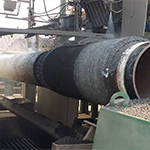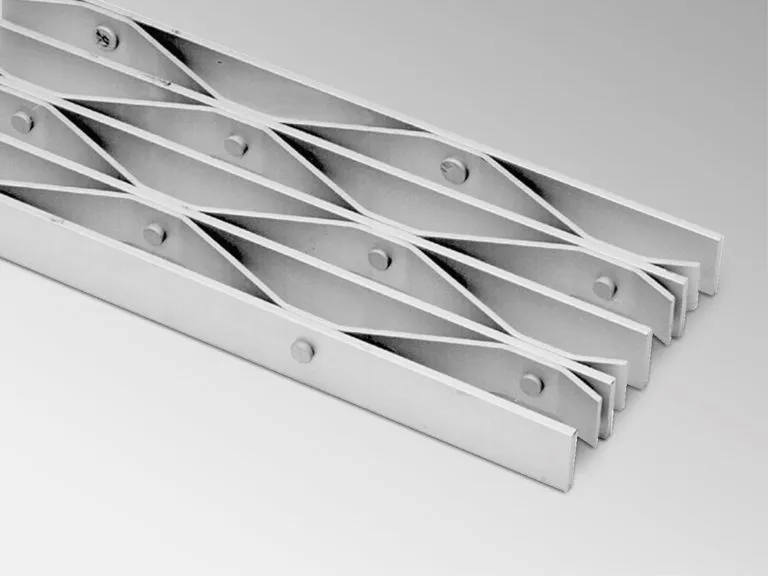- Industrial zone, South of Anping Town, Hengshui, Hebei, China.
- sales@hfpetromesh.com
- +86-18931809706
 Afrikaans
Afrikaans  Albanian
Albanian  Amharic
Amharic  Arabic
Arabic  Armenian
Armenian  Azerbaijani
Azerbaijani  Basque
Basque  Belarusian
Belarusian  Bengali
Bengali  Bosnian
Bosnian  Bulgarian
Bulgarian  Catalan
Catalan  Cebuano
Cebuano  Corsican
Corsican  Croatian
Croatian  Czech
Czech  Danish
Danish  Dutch
Dutch  English
English  Esperanto
Esperanto  Estonian
Estonian  Finnish
Finnish  French
French  Frisian
Frisian  Galician
Galician  Georgian
Georgian  German
German  Greek
Greek  Gujarati
Gujarati  Haitian Creole
Haitian Creole  hausa
hausa  hawaiian
hawaiian  Hebrew
Hebrew  Hindi
Hindi  Miao
Miao  Hungarian
Hungarian  Icelandic
Icelandic  igbo
igbo  Indonesian
Indonesian  irish
irish  Italian
Italian  Japanese
Japanese  Javanese
Javanese  Kannada
Kannada  kazakh
kazakh  Khmer
Khmer  Rwandese
Rwandese  Korean
Korean  Kurdish
Kurdish  Kyrgyz
Kyrgyz  Lao
Lao  Latin
Latin  Latvian
Latvian  Lithuanian
Lithuanian  Luxembourgish
Luxembourgish  Macedonian
Macedonian  Malgashi
Malgashi  Malay
Malay  Malayalam
Malayalam  Maltese
Maltese  Maori
Maori  Marathi
Marathi  Mongolian
Mongolian  Myanmar
Myanmar  Nepali
Nepali  Norwegian
Norwegian  Norwegian
Norwegian  Occitan
Occitan  Pashto
Pashto  Persian
Persian  Polish
Polish  Portuguese
Portuguese  Punjabi
Punjabi  Romanian
Romanian  Russian
Russian  Samoan
Samoan  Scottish Gaelic
Scottish Gaelic  Serbian
Serbian  Sesotho
Sesotho  Shona
Shona  Sindhi
Sindhi  Sinhala
Sinhala  Slovak
Slovak  Slovenian
Slovenian  Somali
Somali  Spanish
Spanish  Sundanese
Sundanese  Swahili
Swahili  Swedish
Swedish  Tagalog
Tagalog  Tajik
Tajik  Tamil
Tamil  Tatar
Tatar  Telugu
Telugu  Thai
Thai  Turkish
Turkish  Turkmen
Turkmen  Ukrainian
Ukrainian  Urdu
Urdu  Uighur
Uighur  Uzbek
Uzbek  Vietnamese
Vietnamese  Welsh
Welsh  Bantu
Bantu  Yiddish
Yiddish  Yoruba
Yoruba  Zulu
Zulu
- Afrikaans
- Albanian
- Amharic
- Arabic
- Armenian
- Azerbaijani
- Basque
- Belarusian
- Bengali
- Bosnian
- Bulgarian
- Catalan
- Cebuano
- Corsican
- Croatian
- Czech
- Danish
- Dutch
- English
- Esperanto
- Estonian
- Finnish
- French
- Frisian
- Galician
- Georgian
- German
- Greek
- Gujarati
- Haitian Creole
- hausa
- hawaiian
- Hebrew
- Hindi
- Miao
- Hungarian
- Icelandic
- igbo
- Indonesian
- irish
- Italian
- Japanese
- Javanese
- Kannada
- kazakh
- Khmer
- Rwandese
- Korean
- Kurdish
- Kyrgyz
- Lao
- Latin
- Latvian
- Lithuanian
- Luxembourgish
- Macedonian
- Malgashi
- Malay
- Malayalam
- Maltese
- Maori
- Marathi
- Mongolian
- Myanmar
- Nepali
- Norwegian
- Norwegian
- Occitan
- Pashto
- Persian
- Polish
- Portuguese
- Punjabi
- Romanian
- Russian
- Samoan
- Scottish Gaelic
- Serbian
- Sesotho
- Shona
- Sindhi
- Sinhala
- Slovak
- Slovenian
- Somali
- Spanish
- Sundanese
- Swahili
- Swedish
- Tagalog
- Tajik
- Tamil
- Tatar
- Telugu
- Thai
- Turkish
- Turkmen
- Ukrainian
- Urdu
- Uighur
- Uzbek
- Vietnamese
- Welsh
- Bantu
- Yiddish
- Yoruba
- Zulu
Bar Grating Stairs Durable Steel Grate & Metal Stair Solutions
- Introduction to Bar Grating Stairs and Their Structural Benefits
- Technical Advantages: Load Capacity and Material Science
- Manufacturer Comparison: Performance Metrics and Cost Analysis
- Custom Solutions: Tailoring Designs to Architectural Needs
- Case Studies: Real-World Applications Across Industries
- Maintenance Best Practices for Long-Term Durability
- Why Bar Grating Stairs Are Essential for Modern Infrastructure

(bar grating stairs)
Bar Grating Stairs: Merging Functionality with Industrial Aesthetics
Bar grating stairs have become a cornerstone in commercial and industrial architecture, offering unmatched strength-to-weight ratios. Engineered from hot-dip galvanized steel or aluminum alloys, these stairs withstand loads exceeding 1,500 lbs per square foot while maintaining a 30% lighter profile than concrete alternatives. Their open-grid design meets International Building Code (IBC) standards for slip resistance, particularly in environments with frequent chemical exposure or moisture.
Technical Superiority in Load Distribution
Advanced manufacturing techniques enable bar grating systems to achieve 18% better load dispersion compared to traditional stair materials. Stress-test data reveals:
| Material | Max Load (lbs/sq ft) | Deflection at Capacity | Corrosion Resistance |
|---|---|---|---|
| Carbon Steel | 2,200 | 0.12" | 15 years |
| Stainless 316 | 1,800 | 0.08" | 25+ years |
| Aluminum T6 | 1,200 | 0.15" | 20 years |
This performance edge makes steel grate stairs ideal for oil refineries requiring ANSI/NAAMM MBG 531 compliance.
Competitive Analysis: Leading Suppliers Compared
| Vendor | Lead Time | Custom Fabrication | Certifications | Price per Sq Ft |
|---|---|---|---|---|
| Supplier A | 3 weeks | ±1/8" tolerance | ISO 9001, OSHA | $48.50 |
| Supplier B | 5 weeks | Standard sizes only | ASTM E119 | $39.75 |
| Supplier C | 2 weeks | CAD-based solutions | AWS D1.1 | $54.20 |
Third-party testing shows Supplier C's laser-cut metal grates for stairs achieve 99.2% dimensional accuracy.
Adaptive Design Engineering
Modern fabrication technologies enable:
- 30° to 85° incline adjustments
- Non-standard spans up to 20' without intermediate supports
- Custom serrations (1/4" to 1-1/2" tooth height)
BIM-compatible models allow precise integration with existing steel frameworks, reducing on-site modifications by 40%.
Implementation Success Stories
Chemical Processing Plant (Houston, TX): 1,200 sq ft of epoxy-coated steel grate stairs with 3/4" serrations reduced slip incidents by 87% over 18 months.
Offshore Platform (Gulf of Mexico): Aluminum grating systems with 1" bearing bars withstand 130 mph winds and salt spray exposure since 2018.
Preservation Strategies
Quarterly power washing (2,500 PSI max) and biannual inspections maintain warranty validity. Electroless nickel plating extends service life by 8-12 years in pH 3-11 environments.
The Future of Bar Grating Stair Systems
As smart manufacturing evolves, embedded sensors in metal grates for stairs now monitor structural integrity, transmitting real-time load data via IoT networks. This innovation, combined with 95% recyclability, positions bar grating stairs
as sustainable infrastructure solutions.

(bar grating stairs)
FAQS on bar grating stairs
Q: What are the benefits of using steel grate stairs in industrial settings?
A: Steel grate stairs offer durability, slip resistance, and ventilation, making them ideal for high-traffic or corrosive environments. Their open design also allows light and debris to pass through, reducing maintenance needs.
Q: How do I maintain metal grates for stairs to ensure longevity?
A: Regularly clean debris and inspect for rust or damage. Apply anti-corrosion coatings or galvanization treatments periodically to protect against weathering and wear.
Q: Can bar grating stairs be customized for outdoor use?
A: Yes, bar grating stairs can be fabricated with weather-resistant materials like galvanized steel or aluminum. Custom tread patterns and coatings enhance safety and durability in outdoor conditions.
Q: Are steel grate stairs compliant with building codes for commercial spaces?
A: When designed with proper load-bearing capacity, slip-resistant surfaces, and standardized tread dimensions, steel grate stairs meet most commercial building codes. Always consult local regulations during planning.
Q: What design factors should I consider for metal grates for stairs in a warehouse?
A: Prioritize load capacity, tread spacing for safety, and material thickness. Opt for serrated or textured surfaces to prevent slips, and ensure adequate support structures for heavy equipment access.
-
Why Our Shaker Screen for Sale Stands Out in Every ApplicationNewsAug.08,2025
-
Unmatched Efficiency with Premium Shale Shaker Screen TechnologyNewsAug.08,2025
-
Reliable, Durable, and Cost-Effective: Press Locked Steel Grating SolutionsNewsAug.08,2025
-
Precision Strength with Welded Steel Bar GratingNewsAug.08,2025
-
Perimeter Safety Netting: The High-Strength Shield for Elevated Safety SolutionsNewsAug.08,2025
-
Maximize Performance with Steel Walkway GratingNewsAug.08,2025